Recent Blog Posts
Busan by Night | A Travel Photo Essay
Photos by Ju-seok Oh. Words by Peter DeMarco.
See Korea’s most “dynamic” city at her best – when the sun goes down.
Busan, Seoul’s little sister to the south, is one of the best kept secrets in Asia. How can a city almost as big as Los Angeles be practically unknown outside of Korea? Not only was it a host city of the 2002 World Cup and Asian games, it’s the home of the largest department store in the world, one of Asia’s biggest film festivals, the fifth largest port in the world, and soon to be home of one of the tallest buildings in the world. As if that was not enough, this city by the sea is bidding for the 2020 Olympic games.
It takes much more than a bunch of superlatives for a city to capture the minds and hearts of travelers. By day, Busan looks like any other big Korean city: block after block of apartment and office towers covered in signs. Once the sun begins to set though, the city takes on a dreamy quality that is distinctly Busan.
From bold to brash, blissful to beautiful, Busan photographer Ju-seok Oh shows us his home town as you’ve never seen it before.

A visit to Sam Kwang Temple during Buddha's birthday when the monks hang hundreds of lanterns is a must. Buddhism has been in Korea since AD 370. The Jogye sect makes up about 90% of Korean Buddhists.
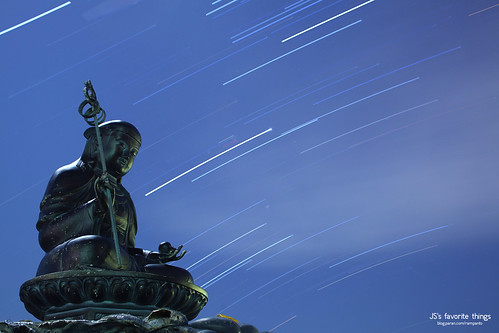
Let the rhythmic sound of the crashing waves put you into a trance-like state. Meditate under the stars at Haedong Yonggeung Temple, arguably Korea's most beautiful temple by the sea.

If all goes according to plan, Busan will be home to the third tallest building in the world. The 110 floor (510 meters) Lotte Super Tower is scheduled to be completed in 2013.

Around 1.5 million people show up from around Korea and Asia for the Busan Fireworks Festival every year in October.
_________________________
Getting there:
Busan is very accessible from any point in Korea.
- By plane, you can fly into Gimhae International Airport. There are direct flights to many cities around Korea and Asia. Airport buses are available from Gimhae to Busan Station and the Haeundae hotels.
- By train, Korea’s high-speed KTX makes the trip from Seoul Station to Busan Station in just under 3 hours for about 50,000 Won one way.
- By boat, there is daily ferry service to/from Busan to Jeju Island and Fukuoka, Japan.
Where to stay:
- Zen Backpackers (010-8722-1530, www.zenbackpackers.com): With it’s central location in Seomyeon, this hostel in the heart of the city has great access to the subway lines, shopping, and restaurants.
- Westin Chosun Busan (051-749-7000): What could be better than looking down on Haeundae beach from your hotel room? And the Westin’s brunch is one of the best in the city. Rooms start around 250,000 Won. Keep an eye out for their monthly specials.
What to do:
- Party it up Busan style. Read Busan’s Nightlife Renaissance to find out where to go.
- Want to know where to find the best beach (it’s not Haeundae), best beer, or best bargain shopping is? It’s all here: Busan’s 10 Best: Beyond the Festivals and Beaches.
- Take in a movie at the Pusan International Film Festival. You can find more details about PIFF and what to do (in this article I wrote and photographed that someone else was credited for!!) here: Uncovering Busan: Korea’s Hollywood by The Sea.
_________________________
Biography: Ju Seok-oh is a native of Busan and one of Korea’s best amateur photographers. Although he does not actively promote his work, he has been published in international travel magazines, newspapers, and more. He is about to graduate from Inje University with a major in System Management Engineering.
Photo Blog: Check out Ju-seok’s award-winning blog which includes photos of his travels to Australia, America, China, Japan and beyond.
Photos on Flickr: J’s Favorite Things
Tongdo Fantasia, Lion King and the pox
The last few days have been busy ones for me.
On Thursday, the camp I finally ended up working at took kids and teachers to Tongdo Fantasia. I had fun and the students had more fun. I’m not sure how much English they spoke, though. It was cold, but not too much so and there were no lines. The roller coaster ( the big one, not the children’s one) was plenty exciting if a little short. I rode it perhaps five times, sometimes just standing up and seeing no one wanted my seat, then sitting down again. Aqua Fantasia was closed, including the indoor portions but it looks like it would be fun in season.
 The bad news is that my son has come down with Chicken Pox -I think a few blisters can be seen here, if you really want to look. He was feverish before the blisters appeared but seems troublingly energetic now. He and I fly out in one week to visit Canada so I hope he recovers quickly.
The bad news is that my son has come down with Chicken Pox -I think a few blisters can be seen here, if you really want to look. He was feverish before the blisters appeared but seems troublingly energetic now. He and I fly out in one week to visit Canada so I hope he recovers quickly.
To cheer him up, we saw the Little Lion King. He really didn’t care for it and I had trouble keeping him quiet through the last twenty minutes. I could follow the plot but not recognize all of the animals by their costumes.
————————————
This blog is nearly a year old and I still don’t what it’s purpose is. When in Gangwondo, I wrote about all things Gangwondo, as well as environmental issues and tourism. I am so new to Busan that I don’t think my opinion is valuable enough yet to pontificate upon local issues. I enjoy discussing education and how to teach creativity in class, but again, I am not so sure that’s what I want here.
I will try to keep this blog going as it is through blogging that I have met and made some good friends here in Korea. I will keep it going, but going where?
Christmas Season Wrap Up
After all, when you're a person so close-knit to your family, it's hard to know how you're supposed to act and react to the holidays when you're spending it in a land that is your residence, yet is not your home.
Enter Causes Greater Than Thyself.
First up, finding great gifts for family back home. We took a strategic approach and did half of our shopping online, and half from here. You may not know it, but Korea is a shopper's sanctuary, with everything from giant stationary shops to luxurious department stores to guys selling stuff off the back of a truck parked in front of your workplace. After some careful post office guesswork, mission accomplished.
Cause number two, kindergarten Christmas Concert. Christmas Concerts are serious business here, meant mostly to show off our academy's swagger. I remember kindergarten concerts as a "one song per class, some hand gestures" type of cute thing. This was not one of those concerts; it was full on, each class performing a fully choreographed dance routine and an eight minute play, including costume changes. Teachers began writing scripts in October and classes started rehearsing in November. In the end, the parents were very impressed, and the teachers relieved.
 |
| Shane's class waiting patiently for their turn. |
| One of UPenn classes most talented class clowns. Heart him. |
Next, my role as Santa's helper at school, trying to convince the students that it really was Santa, not Shane Teacher, even though this Santa has earrings just like Shane. The kids are too smart for me, and I got tangled in my web of lies.
Our school was very kind to us, not only treating the teachers to a Korean BBQ dinner after the Christmas Concert, but also holding the first ever all-staff end of year party. Dinner included soju and makkeoli (rice wine). Boss man asked us to take a shot with him, and when I replied that I shouldn't drink too much because I had to work the next day, he told me that he doesn't want to think of me as an old lady, so drink up. I love Korean hospitality.
The finale to our Christmas was both the best and most difficult, and it left me marked with many mixed emotions, mostly the feeling that I needed to educate myself much more about social systems here. Shane and I were invited to join others in volunteer on Christmas day at local orphanages.

As for our families in Wisconsin, we were able to arrange a late night Skype session to spend Christmas morning with them. It wasn't the same as being there, of course, but it was a little of home from far away.
| Christmas Lights Festival in Nampo-dong. After all, nothing says Christmas like flags and dolphins. |
Renewable energy: Does our education have the basics?
This week, a friend from the Philippines and I were privileged to meet one of the most formidable South Korean environmental activists. Mr. K. Ja Sang is unapologetically conservative, an environment fanatic and a green energy enthusiast, at least from the first impression. Some of his understanding about the contemporary lifestyle and its impact on environment are appreciably genuine attracting to a keen mind. After an hour’s lecture in his office my brains traveled back to my childhood days.
You see, my interest for environmental affairs did not begin with the Copenhagen 2009 neither did it come from the controversies that the Kyoto Protocol brought. My grandfather, a farmer, made me believe that environment, particularly trees and water, was to be respected, utilized sustainably and protected by all means. While to date I can identify with most of the waving trees in his compound, I learnt much from him than I did in my entire schooling.
As I pondered about Mr. Ja Sang’s thoughts about the promise of a cleaner environment, job creation and a safer earth through adoption of green renewable energy, I wondered why governments across the world are so slow to hear from green revolution protagonists. Picture this… the most fundamental political wars today involve energy sources, principally oil and gas. From Russia to Sudan, Iraq to Nigeria, governments, rebles or communities are clashing over these natural resources resulting thousands of deaths over the years. This particularly reminds us of the Darfur conflict and the ongoing referendum leading to the separation of Sudan. Some historians have tied world wars to the quest for energy sources. Needless to mention the negative climatic impact as consequences of using fossil fuel. Read more about effects of fossil fuels.
I pondered some more on the promises of renewable energy from educational point of view. As an educational philosopher, I believe that education is informative, formative and hence transformative. But education is not neutral; it is in fact the beliefs of its deliverers. This leads to the questions: who are our teachers, whose ideas are they passing on and from what understanding of reality (or worldviews) do they come from? It further leaves a challenge for a genuine critique on our educative processes; be it from school, mass media, pulpit, theaters, name it.
If the mandate of humanity is to conserve the environment as many religious group say, or let’s put it from a Christian perspective for instance … man (and woman) are tasked with the dressing of the creation meaning that they are to form cultures and be stewards of the creation in a manner glorifying to the Creator. Personally I wonder loudly why this hasn’t been entrenched elementally in educational system even within religions that believe stewardship to be human’s mandate. Of course, there are known historical and idealistic reasons for the failure including Platonic Dualism of secular verses sacred or has man’s greed, as Mahatma Gandhi also wondered, supersede his concern for the coming generation?
Well, perhaps it is time for environmentalists, educationists, journalists, politicians, students and everybody else to find out why contemporary renewable energy policies succeed or fail, who should be the stakeholders in the energy and environmental sectors, why and how to secure thriving renewable energy application contexts and why everyone should be involved.
Meanwhile, I suppose that education system that largely leaves out environmental understanding from its curricula is bound to produce exploiters rather than stewards. If this is not a warning, it’s a prediction!
Question from a reader: understanding the buses?
A reader named J.L. writes in asking about buses:
Hello Chris. I’ve been here for about 5 months with my Husband in [city redacted]. I was wondering if you had any websites that explain what busses to take to go to certain places? the 20 bus that takes us to Pyeongtaek Station//AK Plaza but I don’t know what busses to take from there to get to other places. I just mean city busses not the shuttle busses. I tried looking on a website I found on google but it wasn’t much help and didn’t tell me what busses go where. Thank you very much! Hope you can help!
[J.L.]
Hi J.L.
Ahh, the buses – one of the best ways of getting around once you figure them out. If you’re in Seoul, the most commonly referred website is this Congamul interactive map. Personally, I’m not a big fan – it’s slow, buggy, requires a plug-in, and only works in Internet Explorer. Google Maps works better with plain-English search terms, and is probably familiar to you already.
Where using the subways requires knowing where to transfer or when to get off, buses require a bit of geographical knowledge. When you see a certain place, it helps to know if that’s north, south, east, or west to where you want to go. This, of course, tends to come with experience.
Photo credit: Visit Korea
Around Seoul, the blue bus route numbers are based on the first and last stops the bus makes. For example, take bus number 101. That bus route’s first stop is somewhere in zone 1 (northern Seoul) and winds its way down to zone 0 (downtown Seoul). That last digit is there to keep it unique; bus 102 also starts in zone 1 and ends in zone 0, as does 103, 104, etc.
Green buses and red buses in Seoul have a similar numbering system – the first two digits indicate the first and last stop zones, just like the blue buses. The last two numbers are the serial number, just like the last one of the blue buses. Other cities and counties across Korea have their own systems.
Um, ok – so how does that help me get to the local what’s-it-called?
If you prefer the techie solution, I’d start with Visit Korea’s traffic website. You can view information about every bus that runs through Seoul, Gyeonggi-do, and Incheon. Starting with the buses that stop in your area, look up the numbered routes and see where they go.
If you prefer the note-taking solution, keep some paper with you whenever you travel. As you travel, note which buses stop at the places you frequent. Once you’ve collected some information, cross-reference the list and make some matches. For example, you know bus 20 stops at Pyeongtaek Station/AK Plaza and at Pyeongtaek City Hall. When I lived in southern Seoul, I knew I could catch bus 462 to get from my apartment to the Lady in Red’s old apartment. Keep the notes however you like – the Lady in Red keeps a note on her iPod Touch for reference wherever she goes.
If you prefer the exploring kind, just hop on a bus and see where it takes you. Keep your eyes on the bus map or out the window – if you want to turn around, get off, cross the street, and get the same bus going the other way. This is actually a fun way to explore an area, or see what’s around you. If all else fails, catch another bus or a taxi back to a known landmark and work your way home from there.
Reading the bus routes
It’s sort of a fine art reading the bus routes. On one hand, some bus routes stop at subway stations, while others have more twists and turns than a curly wig. Some route signs feature English bus names, while others are entirely in Korean. There’s not a lot of consistency, and not always a lot of help for the foreigners. While Seoul buses typically have English audio announcements, you can’t always count on them outside the capital city. Learning to read Korean – and getting to know the lay of the land – will definitely help you ride the buses with confidence.
Calling for help
One solution is to call 1330 (the government-sponsored tourism hotline) or 120 (the government-sponsored ‘life-in-Korea’ hotline – press 9 to get an English speaker). Ask them how to get from point A to point B, and they’ll tell you if a bus connects those two points. They’re also decent for those classic ‘how do I get to…?’ type questions.
Readers – how did you figure your way around the buses?
This post was originally published on my blog,Chris in South Korea. If you are reading this on another website and there is no linkback or credit given, you are reading an UNAUTHORIZED FEED.
This post was originally published on my blog,Chris in South Korea. If you are reading this on another website and there is no linkback or credit given, you are reading an UNAUTHORIZED FEED.
KASCON 25 at Yale University
Take 650 Korean Americans from across the country, put them all together on Yale’s campus, and what do you get? KASCON 25.
The Korean American Students Conference (KASCON) is the oldest student-run ethnic- specific conference in the country. KASCON aims to inspire Korean American students to become leaders of their community by showcasing prominent Korean American figures in a variety of different fields and encouraging discussion and reflection on issues pertinent to our community. This year the exciting lineup of speakers includes Phil Yu (Angry Asian Man), Paull Shin (Washington State Senator), Chul Soo Hyun (President of the Korean American Medical Association), Michael Kang (director of “West 32nd”), and many more.
In addition to meeting new people and listening to great speakers, there will be lots of great entertainment over the KASCON weekend, including Kollaboration! Online auditions are being held for Kollaboration at KASCON 25 and the winner will get to perform in the show on Saturday night of the conference. So if you want to be the next Clara Chung, go to www.kollaboration.org/yale to submit an audition application. To sum it all up, KASCON 25 is a conference to develop your identity as a Korean American while having a lot of fun and meeting a ton of new people. For a complete list of speakers and for updates on the conference, check out their website at www.kascon.com and their Facebook page.
Related posts:
- East Coast Asian American Student Union Conference (ECAASU) at University of Pennsylvania This year’s East Coast Asian American Student Union Conference is...
- Kollaboration 10 is Finally Here Kollaboration 10 is finally here and it takes the big...
- Korean-Americans Marching for Immigration Reform Did you know that among Asian American Pacific Islanders (AAPIs),...
Related posts brought to you by Yet Another Related Posts Plugin.
China Overtakes Korea in Shipbuilding: A Scary Precedent for "Korea Inc"
Yesterday, this brief clip appear on Yonhap's website: Actually, this is not news to Korea shipbuilders nor steel companies, whose largest customers include the largest Korean shipbuilders (such as Hyundai Heavy).
The notion that Chinese industry will grow, and rapidly, is not new. Shanghai has replaced Singapore as the world's busiest port. Joint jentures are widespread between Korea and China. Autos, electronics, logistics: these are just a few of the Korea's most important industries and China needs precisely this type of technology. In fact, China's need for this technology is so great, it almost cannot afford for a wider Korean conflict. On November 27, The Lost Seoul twitted the following, "Just because we don't understand Mandarin doesn't make the Chinese stupid." The point: China has much a much bigger fish to fry than to let a war between North and South Korea begin. It would jeopardize the technology transfer critical to China's economic growth.
It's Not That Simple, Of Course
For Korea, this represents a double-edged sword. Korea must understand (and it does) that it depends on the Chinese marketplace. Close geographically, and with many Koreans and Chinese sharing a common, albeit distant heritage, it is an intuitively attractive notion that the two countries should forge close economic ties. When combined with the historic idea that the Japanese and Chinese people have a long-standing mistrust of one another, China and Korea seem like logical partners in many ways.
China requires Korean technology. Korea requires the size and breadth of the Chinese marketplace. How long this symbiotic relationship lasts is an open-ended question. No one can tell how quickly the Chinese will acquire the technology needed to be self-sufficient. In other areas, China has surpassed expectations. For example, China's initial flight of a stealth bomber has caught the U.S. by surprise.
The Shipbuilding Case as a Dangerous Precedent
It appears that Korea will need to extend its technological lead in every industry. Shipbuilding is, relatively speaking, an industry which does not require exceptionally high levels of technical knowledge. The largest input, steel, is also a relatively easy to produce, assuming that there is a steady supply of iron which can be refined. For Posco et al, the challenge is immediate. Posco and other Korean steel producers will have no choice but to sell to the Chinese and reduce their reliance on Korean shipbuilders. Korean shipbuilders will need to secure orders from non-Chinese clients. These are not easy tasks. Other industries vital to Korea, such as automobile manufacturing, and consumer electronics will face the identical challenges that Korean shipbuilders and steel producers currently face. So while Korea's leading corporations, such as Hyundai Motors and Samsung Electronics, enjoy leadership roles in their respective industries, the shipbuilding case serves as a dangerous precedent from which important lessons must be learned.
Admittedly, it may be that the Chinese marketplace is so large that it does not matter. It may be that Korean manufacturers and newly-developed Chinese corporations will be able to peacefully co-exist. This has not been the case in other similar situations. Sony and Samsung used to have joint ventures with one another. Much of those cooperative arrangements have now ended. It is almost inconceivable that the Chinese do not try the same tactics in the future. How "Korea Inc" addresses this issue will be a key determinant of its place in the global economic order.







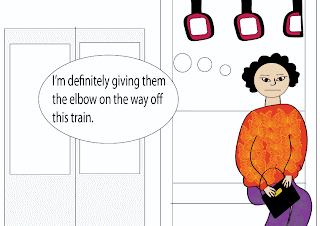



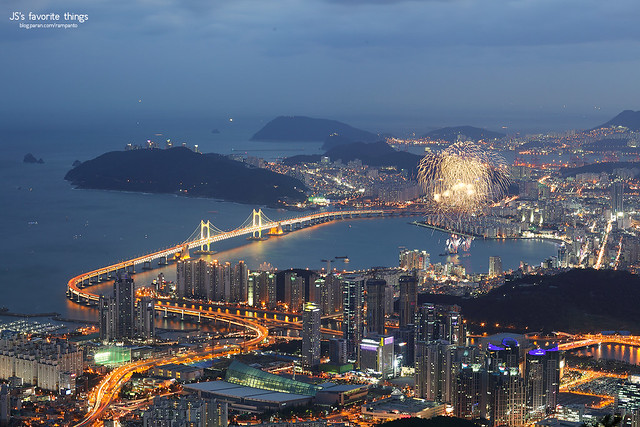
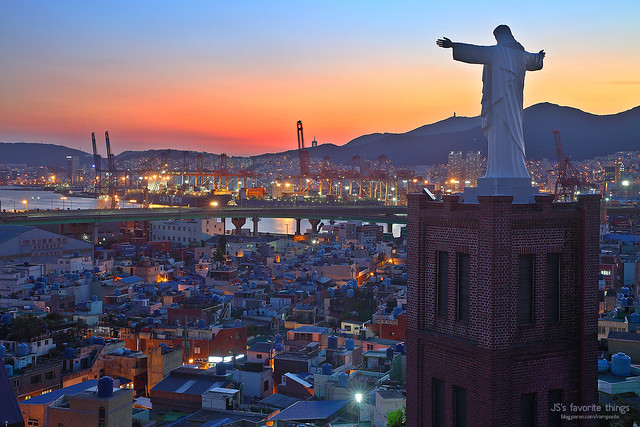


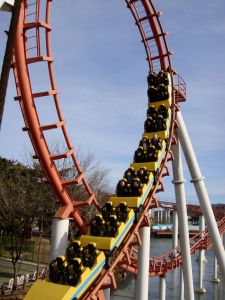
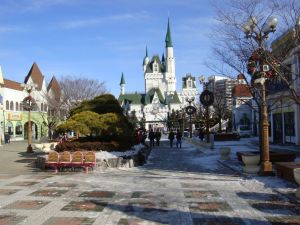
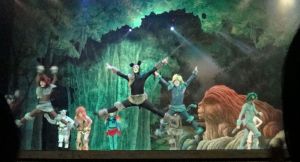
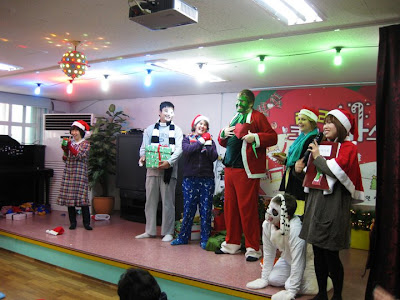
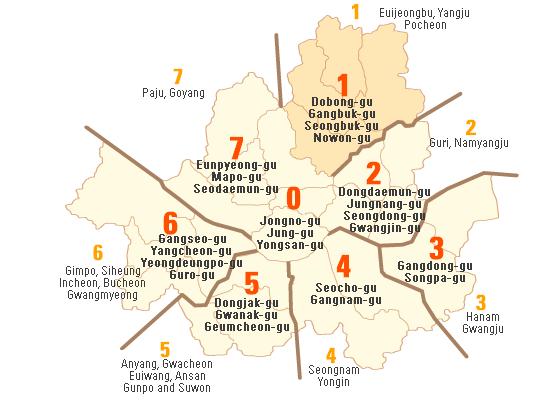
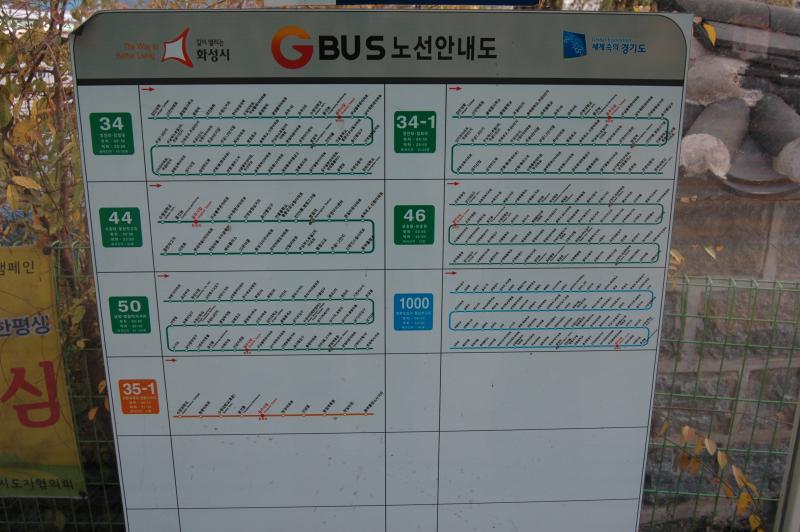



 RSS Feed
RSS Feed
Recent comments